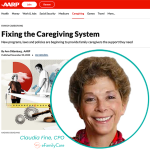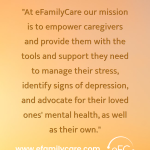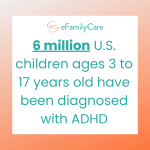
By Carol Bradley Bursack
Along with her brother Jay, Kim Savage of Phoenixville, PA has been caring for her now 82-year-old mother, JoAnn, since JoAnn was officially diagnosed with dementia in 2015.
Dementia is an umbrella term that describes the symptoms of cognitive diseases. These include having problems with thinking that are severe enough to interfere with normal activities of daily living lasting longer than six months. Different types of dementia affect different areas of the brain, particularly in the early stages of any given disease.
Alzheimer’s disease, the most common type of dementia, most often destroys neurons and their connections in parts of the brain that are involved in the functions of memory. These include the entorhinal cortex and hippocampus. Later, the cerebral cortex, which is responsible for language, reasoning, and social behavior is also affected. This scenario is considered typical however some people show symptoms of impaired reasoning and judgment before their memory problems are evident.
JoAnn’s dementia is somewhat different in that it has mostly affected the frontal lobe and the central cortex. Frontotemporal dementia (FTD) is typically the diagnosis for the type of dementia that affects the frontal lobe of the brain. This frontal lobe involvement often makes the affected people combative and Kim says that her mom is “super pleasant and compliant,” so she doesn’t fall into this category making her atypical.
JoAnn also has the involvement of the cerebral cortex and possibly other areas of her brain, so she has a mixed dementia diagnosis, which is quite common.
Kim says that her mom has become non-verbal and completely dependent on others for getting out of bed, eating, personal hygiene, “pretty much everything.” Kim and her brother take care of their mom in JoAnn’s home of 60 years, with the hope that she can remain there until her death.
The potential loneliness of caregiving
One of the hardest things for many caregivers is the feeling of being isolated. The unrelieved demands of caregiving even for a much-loved parent or spouse can be overwhelming, which is something that people who haven’t been caregivers rarely understand. This isolation can lead to depression.
The Family Caregiver Alliance writes, “Of clients of California’s Caregiver Resource Centers, nearly 60% show clinical signs of depression.” The same article goes on to say that, “In an effort to provide the best possible care for a family member or friend, caregivers often sacrifice their own physical and emotional needs…”
Kim’s family is an example of how breaking out of that isolation by having a mix of other people involved in providing care can make an enormous difference in the feeling of isolation.
“We have been blessed with great family, friends, neighbors, a faith community and network of caregivers so that we truly are not alone or isolated in the midst of the twists and turns – the unknowns of dementia,” she says.
Setting up a care crew can seem intimidating
After JoAnn’s diagnosis, Kim felt that since she’d leaned heavily on babysitters and advice from other moms when caring for her kids it made sense to do the same thing with her mom after JoAnn developed dementia.
However, setting up and coordinating this group of caregivers can feel intimidating.
“It can feel overwhelming to invest the time in building a caregiving team and the overhead can be high,” Kim says. “But by doing so I have been able to come up for air and focus on my marriage and my children in the midst of Mom’s disease. I’ve also been able to preserve my relationship with my brother so we can have time away from the disease, just be normal and really enjoy the time we have with our mom.”
Real-time help makes it easier
Sometimes trying to set up a circle family and friends plus outside agencies can seem more work than just doing all of the caregiving yourself.
This is where a convenient mobile and online apps can save a caregiver’s sanity. eFamilyCare offers such an app as part of their service that also assigns caregivers their personal care adviser who is available around the clock. Their app allows the caregiver to invite people to join their care crew as well as coordinate schedules so that everyone knows when they are on call, who their backup person will be, and how to make scheduling changes when needed.
Hiring and training caregivers has alleviated how daunting dementia can be,” Kim says. “Now my brother and I really have the freedom to be fully present to my mom and have fun. The bathing, the toileting, the length of time it would take to feed her, those type of needs were stressing us out. With hired help, that part’s taken care of.”
Kim’s mom is now on long-term hospice care and they work with an agency that’s providing two aides to help almost every day of the week.
The personal rewards of having a care crew
Weekly visits from their long-term hospice care team has brought peace of mind into the whole situation of caring for JoAnn and Jay that the family would not otherwise have.
“When you have space, you can actually reflect on the great opportunity you have in caring for your parent, you can laugh and talk about what you love,” Kim says. “Leaning on a care team can reframe parts of the journey and gives you an opportunity to be grateful.”







